Bermuda Grass Calendar: Essential Seasonal Guide
- February 29, 2024
- 1 comment
I’m excited to share a Bermuda grass care calendar that has been a game-changer for me, and I’m confident it will be for you too. This guide is straightforward and incredibly effective, aimed at transforming any lawn into the standout feature of the neighborhood. Whether it’s your yard that’s looking a bit under the weather or you’re keen on assisting a neighbor, this calendar is the tool you need. What sets this guide apart is its simplicity and the reliance on proven lawn care practices, all backed by solid university research. This ensures that the advice and steps outlined will genuinely nurture your Bermuda grass to peak health and lushness. Following this calendar, you’ll not just be maintaining your lawn; you’ll be enhancing it to a level of beauty and vitality that will draw admiring glances from all who pass by.
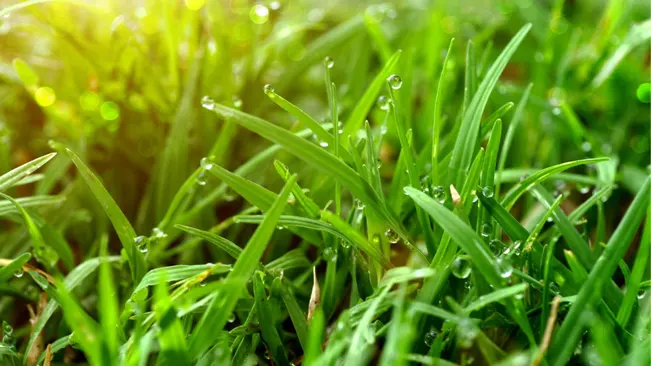
List of Bermuda Grass Calendar
- December, January, February: The Hibernation Period
- March, April: Spring into Action
- May, June: Growth and Protection
- July, August: Maintenance Mode
- September: The Last Push
- October, November: Sit Back and Relax
What is a Bermuda Grass Calendar?
A Bermuda grass calendar is a comprehensive schedule designed to guide homeowners and lawn care enthusiasts through the seasonal care and maintenance required for Bermuda grass, a popular turf grass in warmer climates. This calendar outlines the optimal times for various lawn care activities such as mowing, watering, fertilizing, aerating, dethatching, overseeding (if applicable), and applying pre-emergent and post-emergent herbicides to control weeds. The purpose of the calendar is to ensure that Bermuda grass remains healthy, vibrant, and green throughout its growing season and is properly prepared for dormancy during colder months. By following a Bermuda grass calendar, you can ensure that your lawn receives the right care at the right time, leading to a lush, resilient, and beautiful landscape.
December, January, February: The Hibernation Period
During the winter months, Bermuda grass enters a period of dormancy, much like the fabled Rip Van Winkle, retreating into a deep, restful state as it awaits the warmer days of spring. This dormancy phase is a crucial time for the lawn, as it’s a period of rest and recovery. Rather than disturbing this natural cycle with aggressive lawn care activities, the focus shifts towards maintenance, primarily weed management.
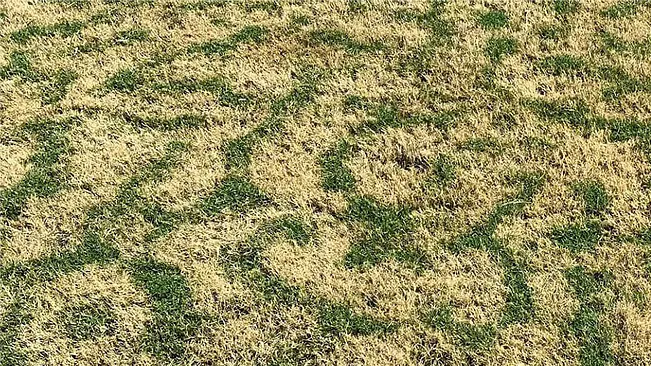
It’s an opportune moment to apply pre-emergent herbicides, which act as a preventative measure against weed germination and growth. This strategic application ensures that the lawn remains free from invasive weeds, all while the Bermuda grass continues its slumber undisturbed, ensuring that when spring arrives, your lawn is primed for lush, vibrant growth, unhampered by unwelcome plant invaders.
March, April: Spring into Action
As the chill of winter dissipates and the first signs of spring emerge, your Bermuda lawn stands on the cusp of a pivotal growth phase, ready to break from its dormant state and burst into a season of vigorous renewal. This transitional period demands a proactive approach to lawn care, beginning with an aggressive scalping technique that might appear extreme at first glance. Stripping the lawn down almost to the soil not only rids it of the old, lifeless layers but also stimulates the healthy, green shoots below, setting the stage for a lush, thick turf.

It’s essential during this time to pause any application of granular treatments, as these can be inadvertently removed during the scalping process, wasting valuable nutrients. This strategic timing ensures that your lawn receives the full benefit of fertilization, paving the way for robust growth that capitalizes on the spring’s nurturing conditions, ultimately transforming your Bermuda lawn into a vibrant, verdant canvas.
May, June: Growth and Protection
As the days get warmer, you’ll notice your Bermuda grass coming to life, embracing the heat with open arms. This is your cue to switch gears in your lawn care routine, especially when it comes to fertilization. Moving to a 25-10 fertilizer mix is like serving up a gourmet meal for your lawn, encouraging that rich, green growth we all love. But don’t just sit back and wait for rain to do all the work; a quick dose of nitrogen spray can really kick things into high gear, giving your Bermuda that lush, full look.
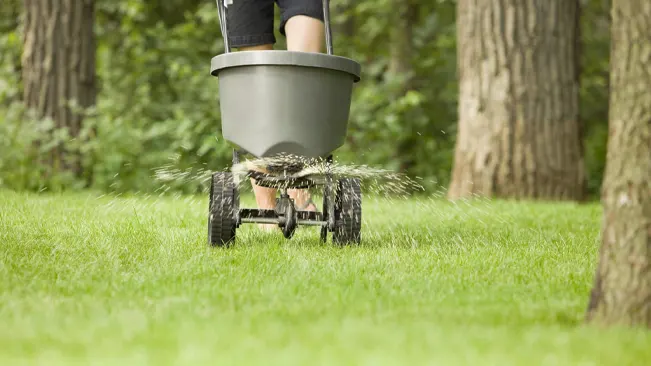
And while it’s thriving, keep a sharp eye out for any uninvited guests like pests or diseases. Catching these early and dealing with them swiftly means your Bermuda stays as healthy as it looks, ready to be the envy of the neighborhood.
July, August: Maintenance Mode
July and August bring a welcome ease to the rhythm of lawn care, mirroring the laid-back essence of summer itself. During these sun-drenched months, the primary care for your Bermuda grass narrows down to a simple yet effective routine: regular mowing and consistent watering. Keeping the blades trimmed short plays to the strengths of Bermuda grass, encouraging a dense, carpet-like growth that’s as delightful underfoot as it is pleasing to the eye.

And with the potential for scorching heat waves, vigilant watering becomes crucial, ensuring your lawn remains hydrated and resilient against the stress of dry spells. By maintaining this straightforward regimen, you can transform lawn care into an almost leisurely activity, akin to the relaxed enjoyment of a poolside afternoon, allowing both you and your lawn to thrive in the warmth of the season.
September: The Last Push
As the crisp air of fall begins to settle in, signaling the end of the growing season, it’s crucial to give your Bermuda grass the care it needs to prepare for the dormant winter months ahead. This is the perfect time to apply a balanced fertilizer to your lawn, a critical step that goes beyond just maintaining its current appearance. The right blend of nutrients will fortify the grass roots, ensuring they remain strong and resilient through the cold. This deep nourishment lays the foundation for your Bermuda grass to bounce back with vigor when spring’s warmth coaxes it from slumber.
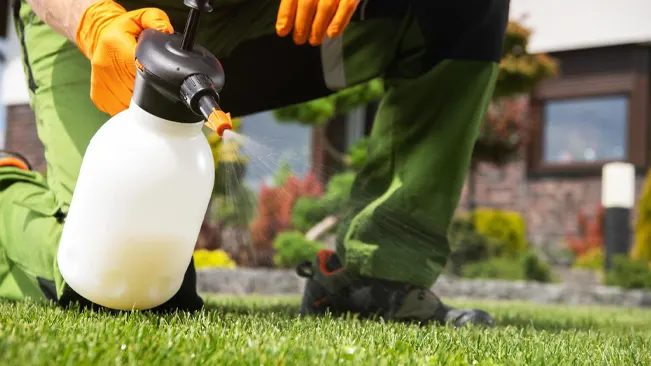
Additionally, applying a pre-emergent herbicide during this transitional period is a wise move to prevent weed seeds from taking root in your lawn. This proactive measure will keep your lawn looking pristine and minimize maintenance efforts come spring, allowing your Bermuda grass to emerge from its winter nap unencumbered by unwanted invaders.
October, November: Sit Back and Relax
You’ve almost crossed the finish line with your lawn care for the year. As we move into the cooler months, your Bermuda grass is slowly winding down, preparing to enter its dormant phase. This period isn’t just about the grass taking a break; it’s also a chance for you to step back and really take in the results of all the hard work you’ve put in throughout the year.
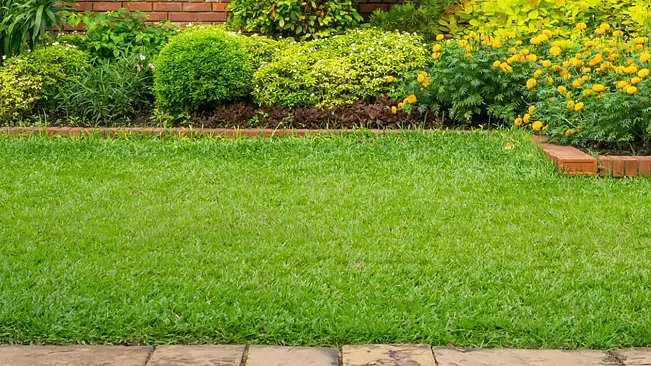
The lush green that’s been your canvas is now settling in for a well-deserved rest. Your tasks now are few and far between, giving you ample opportunity to enjoy your lawn’s beauty and reflect on the successful growing season. It’s a rewarding time, filled with the satisfaction of a job well done and the anticipation of doing it all over again next year, with even better results.
Pre-Emergent: The Secret Weapon
It’s hard to overemphasize just how crucial pre-emergent treatments are for keeping your Bermuda lawn looking its absolute best. Think of it as your lawn’s personal bodyguard, applied three to four times annually to fend off unwanted weeds before they even have a chance to sprout. This proactive approach is key to making sure that it’s your lush, green grass that’s getting all the attention, not the pesky invaders trying to steal the spotlight.
Lawn Maintenance Must-Dos
Taking care of a Bermuda grass lawn involves several key practices that are essential for maintaining its health, appearance, and vitality throughout the year. Here’s a detailed look at each of these crucial lawn care activities:
- Scalping: As winter fades and spring emerges, scalping becomes a critical task. This process involves cutting the grass very low to remove the old, dead growth from the previous year, allowing sunlight, air, and nutrients to reach the soil more effectively. Scalping encourages the dormant Bermuda grass to wake up and start putting out new, healthy growth, setting the stage for a vibrant lawn in the coming months.
- Dethatching: Thatch is a layer of dead grass, roots, and debris that can build up on the soil’s surface, blocking water, air, and nutrients from reaching the grass roots. When this layer exceeds half an inch, it’s time for dethatching. This process involves using a specialized tool to remove the thatch, ensuring the lawn can breathe and absorb essential resources efficiently, promoting healthier growth.
- Fertilizing: The nutritional needs of Bermuda grass vary with the seasons. During the growing months, it’s important to use nitrogen-rich fertilizers that support vigorous growth and the deep green color characteristic of healthy Bermuda grass. Tailoring your fertilizing approach to the specific needs of your lawn at different times of the year ensures it receives the right nutrients at the right time, fostering optimal health and appearance.
- Watering: Proper watering practices are crucial, especially for lawns planted in clay soils, which can be prone to water runoff and poor absorption. Adopting smart watering techniques, such as watering deeply but less frequently, encourages the roots to grow deeper, seeking moisture and thus becoming more resilient. This approach ensures the lawn is adequately hydrated without wasting water or causing unnecessary runoff.
- Cutting: Regular mowing is essential for maintaining the health and aesthetics of Bermuda grass. Keeping the lawn short and mowing frequently encourages denser growth, discouraging weeds and pests, and maintaining the thick, lush appearance that Bermuda grass is known for. It’s important to adjust the mowing height and frequency based on the grass’s growth rate and the season to keep your lawn looking its best.
Conclusion
There you have it, a Bermuda grass calendar that demystifies lawn care and makes it accessible to everyone. Whether you’re a seasoned green thumb or a lawn care newbie, following this guide will ensure your Bermuda lawn is the pride of the neighborhood. Share this knowledge with friends, neighbors, and your homeowner’s association, and let’s transform our lawns together.
FAQs
- What is the best time of year to start a Bermuda grass lawn from seed?
The ideal time to sow Bermuda grass seeds is late spring to early summer when soil temperatures consistently reach 65°F or higher, ensuring the best germination and establishment. - Can Bermuda grass thrive in shady areas?
Bermuda grass prefers full sun and may struggle in shady areas. For lawns with moderate shade, consider a grass blend that includes shade-tolerant species. - How often should Bermuda grass be watered during peak summer months?
During hot, dry periods, Bermuda grass should be watered deeply 1-2 times a week, allowing the soil to dry between waterings to encourage deep root growth. - Is it necessary to aerate Bermuda grass, and if so, when?
Yes, aerating Bermuda grass is beneficial, especially for compacted soil. The best time for aeration is in the late spring or early summer when the grass is actively growing. - What type of fertilizer is best for Bermuda grass, and how often should it be applied?
Use a nitrogen-rich fertilizer for Bermuda grass. Apply in the late spring after the last frost, then every 4-6 weeks during the growing season, with the last application in early fall. - How can I control weeds in my Bermuda grass lawn without harming the grass?
Apply a pre-emergent herbicide in early spring before weeds germinate and a post-emergent herbicide for any existing weeds, making sure both are safe for use on Bermuda grass. - What should I do if my Bermuda grass lawn is turning brown in patches?
Brown patches can be due to pests, disease, or watering issues. Identify the cause first—treat for pests or disease as necessary and adjust your watering schedule to ensure even coverage. - Can Bermuda grass be overseeded with another grass type for winter greenery?
Yes, Bermuda grass can be overseeded with cool-season grasses like ryegrass in the fall for green winter lawns. Just remember to mow the Bermuda low and remove thatch before overseeding. - How do I prepare Bermuda grass for winter?
Gradually reduce watering as the weather cools, apply a potassium-rich fertilizer to enhance cold tolerance, and raise the mowing height to leave the grass slightly longer for winter protection. - What’s the best way to repair bare spots in a Bermuda grass lawn?
Rake the area to remove dead grass and loosen the soil, sprinkle Bermuda grass seeds, lightly cover with soil, keep the area moist until seeds germinate, and avoid heavy foot traffic during this time.

Charles Hayes
Forestry AuthorI'm Charles Hayes, I bring over 15 years of specialized expertise in landscaping and woodworking, blending artistic design with sustainable environmental stewardship. My career, fueled by a profound passion for the natural world, encompasses extensive education and hands-on experience in creating harmonious, eco-friendly outdoor spaces and responsibly managing forest resources. Recognized for my professional standing, I am committed to continuous learning and certification in cutting-edge practices. My expertise is not only reflected in my work but also in my contributions to community projects, educational workshops, and collaborations with industry leaders. As an authoritative voice in my field, I strive to share knowledge and promote environmentally conscious approaches, making me a trusted resource in landscaping and forestry.













Thank you very much. This schedule is a lawn saver for me. Question - it is early April and I am dethatching my lawn. I have several problem areas where I need to use a fungicide and I would also like to apply a post emergent weed product. Does it matter in which order? Also I would like to put down new soil and either seed or sod in trouble areas. Can you advise me of the order in which I should do these steps and if there is a wait period in between any of them? Thank you so very much. If you do not have time to reply I completely understand and again, I am truly thankful for the schedule. Sincerely Paula A.
Paula
April 5, 2024 12:36 am